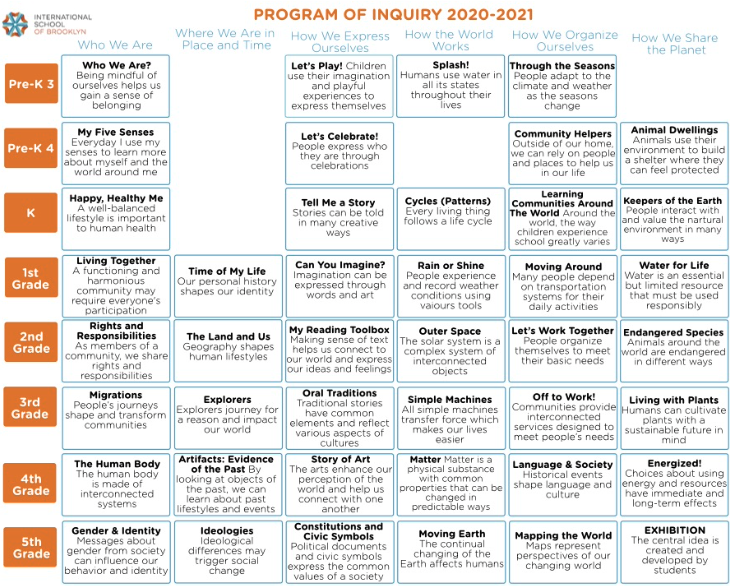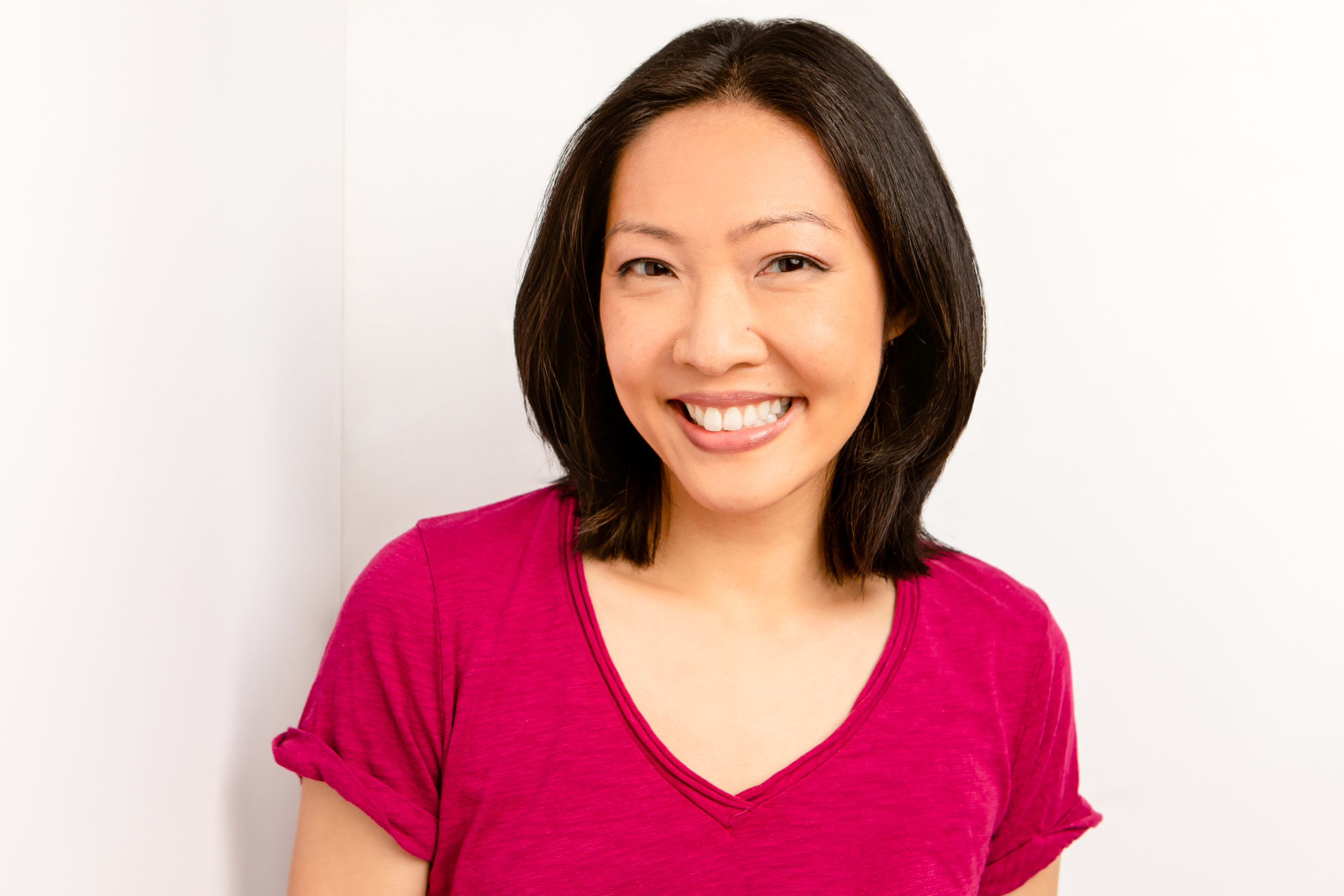The PYP IB program is one of the most intriguing learning models I’ve developed a crush on (don’t tell Jonathan Bailey 😅). Today’s post looks at how three private schools and one public school in NYC are implementing the PYP curriculum for Kindergarten. True to the IB program requirements, all of them have a foreign language exposure component with the most popular languages being Spanish and Mandarin.
International School of Brooklyn
I love this program of inquiry matrix that ISB set out as it is the first graphic I’ve seen that makes clear how the units of study actually get mapped to the six themes outlined in the IB program curriculum.

You can see how:
- Science maps to “How the world works” and “How we share the planet”
- Social science maps to “How we organize ourselves”
- History maps to “Where we are in place and time”
- Language arts maps to “How we express ourselves”
- SEL maps to “Who we are”
Pine Street School’s IB Program (FiDi)
At this school, teachers develop a key concept for each unit every year. Each of the six themes lasts six weeks at this school.
For “Where We Are in Time and Place” a theme the school chose for Kindergarten was “New York, Old and New”. Students explored and developed skills in language, math, science, architecture, sociology, and performing arts thanks to the interdisciplinary nature of the IB program. This sort of connection dense teaching is how I want Mr. 4 to learn as well.
Another example given is how preschoolers study families for the “Who We Are” theme but then move on to human rights in elementary school for that same theme. This shows how while the themes stay the same year to year, the topics become more sophisticated as the children mature.
Dwight School (UWS)
Dwight’s units include inquiries into: senses, products we use, the city around us, personal stories, healthy habits, and forests. Their days are structured around daily and weekly activities. Daily activities include Morning Meeting, small group work, discussion, problem solving, open exploration, P.E., and outside play while weekly specials include music, library, and studio (art and science) in addition to language study in French, Spanish, or Mandarin.
P.S. 294 The Walton Avenue School (Bronx, D9)
I loved their link to the year end PYP exhibit which is the capstone project required at the elementary school level.
Another tipoff as to how they’re managing the units of inquiry is in their newsletter. Kindergarten students are exploring interdependence while 1st graders are diving into how living things must follow natural laws in nature to survive. Other topics in older grades include:
- How community values and perspectives lead to decision making and systems
- Creativity and how it can lead to change
- How to adapt to limited resources and what changes can happen for the greater good
- How self expression comes from our desire to communicate with others
I wish there were more public school examples to report on. P.S. 316 in Brooklyn’s District 17 is an IB school, has rave reviews, and does project based learning but the website only details the programs that are being used at the school, not how the IB program is being taught. I suspect a school tour would provide clarity on the topic and urge parents to consider taking one and asking about the IB program.
As always, I close out with the thought that IB programs are a formidable alternative to NYC gifted and talented programs that have no standards and don’t emphasize teaching students how to think or have a global outlook. In fact, I’d go so far as to say it should be THE alternative to G&T programs at the elementary school level. It’s just such a shame that there are so few IB programs to choose from, but understandable given the requirements of the authorization process.

